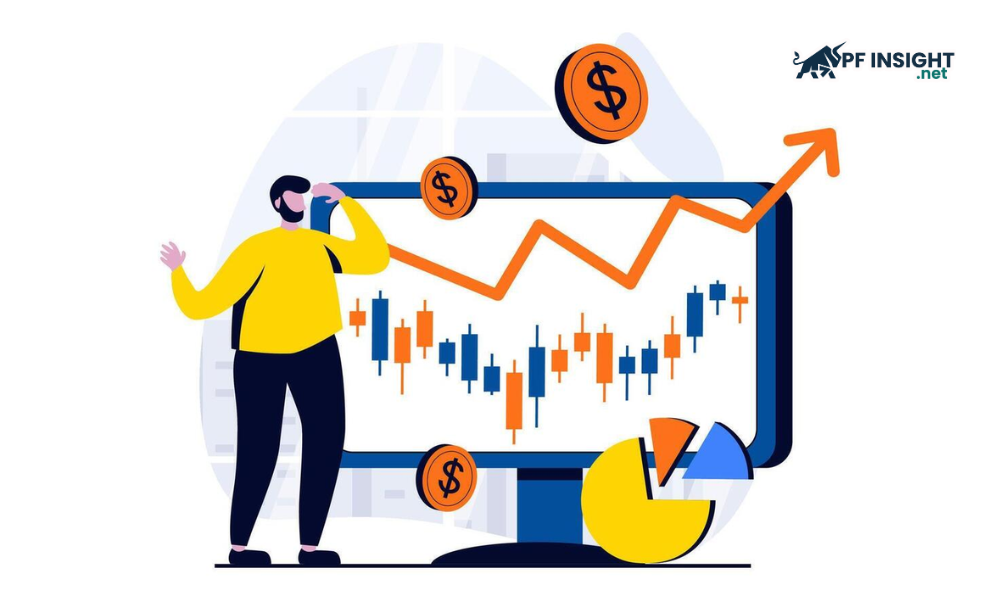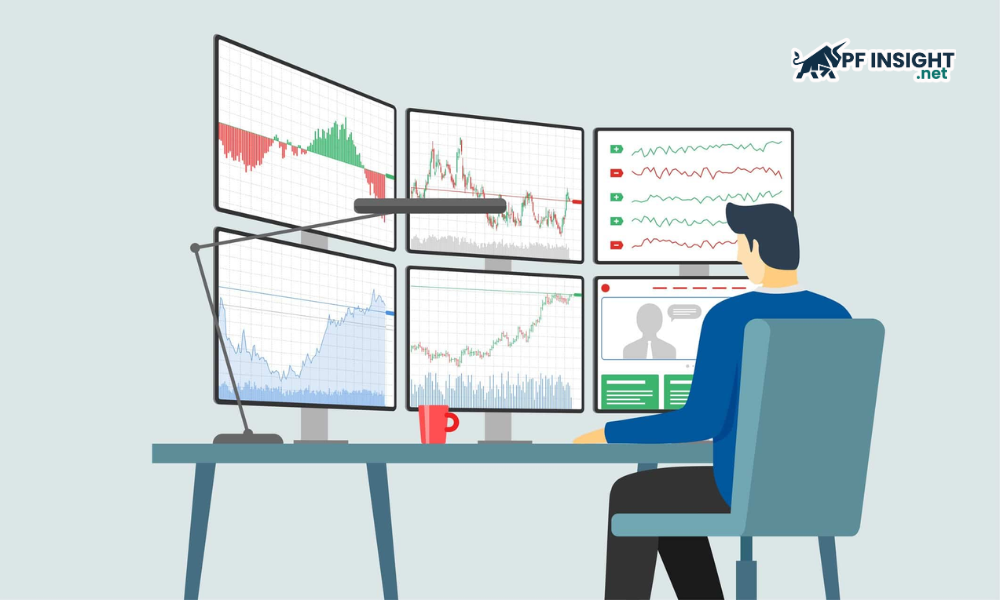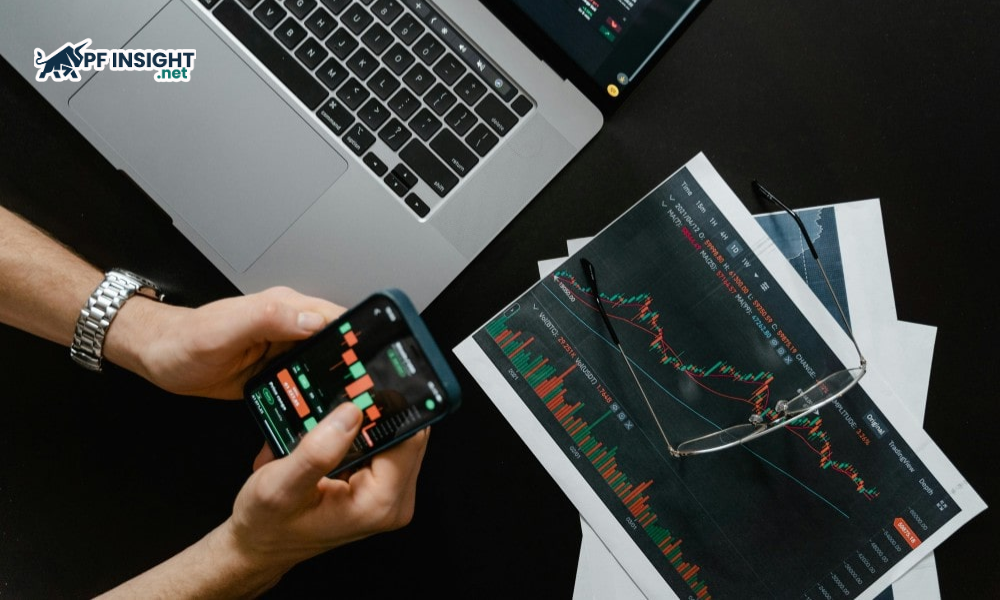Recently, prop stock has emerged as a concept of strong interest in the global investment community. This model allows individual traders to trade with large capital provided by the company, instead of using their own money. So what is a prop stock, how to evaluate prop stock? Let’s find out in detail in this article.
- What is market execution and how does it work?
- What is spot trading and how does it work in 2025
- Profit taking strategy – How to know the right time to lock in your gains?
What is a prop stock?
Prop stock, also known as proprietary stock trading, is a form of trading in which a proprietary trading company uses its own internal capital to invest in stocks and derivative products. Unlike the brokerage model, the goal of prop stock is not to collect transaction fees from customers but to maximize profits directly for the company through proactive investment strategies and professional risk management.
Main features of proprietary stock trading

Prop stock has the following main characteristics:
- Using company capital: Traders do not have to use their own capital but are provided with all the capital by the prop company to participate in the market. This allows them to trade on a larger scale and exploit profitable opportunities more effectively.
- The goal is profit for the company: Unlike brokerages that profit from commission fees, prop stocks aim to generate real revenue by executing trades themselves and benefiting directly from price movements in the market.
- Strict risk management policy: All trading orders are strictly controlled according to the regulations on risk limits, maximum loss and trading volume. Traders are required to maintain high discipline to ensure the safety of the company’s capital.
- Profit sharing system: After each trading cycle, the profit is distributed between the trader and the prop stock company based on a pre-agreed ratio. The sharing ratio is usually quite high, reaching up to 90% depending on trading performance and account level.
- In-depth training and support: Many proprietary trading firms support traders through in-depth training courses, personal coaching, and provide modern trading platforms that help improve skills and strategic thinking.
Comparison between prop stock and traditional stock exchange
Although both involve trading stocks, prop stock trading and traditional stock trading have distinct differences in terms of capital used, profit model, risk level as well as ownership. Understanding these two forms helps traders choose the investment path that suits their personal capacity and goals.
Capital and risk:
- Prop stock: A model that allows traders to trade stocks using capital provided by a proprietary company. Instead of investing with personal money, traders use the company’s capital to make profits. When good results are achieved, profits are divided according to the agreed ratio between the trader and the prop firm.
- Traditional stock exchange: Where investors use personal capital to buy and sell stocks through brokerages such as SSI, VNDIRECT or eToro. They have full control over their investment portfolio, decide on their own strategies and bear all the risks and profits arising from the transaction.
Business model:
- Prop trading: Operates on a cooperative model between traders and funding companies. Traders need to demonstrate effective trading ability and comply with risk rules to share profits. This form is professional, aiming at skill development rather than personal investment.
- Traditional trading: This is a form of independent investment where traders manage their entire portfolio, make buying and selling decisions and are fully responsible for their results.
=>> If you want to pursue a professional trading career, prop stock is the ideal model to start with. You can trade with large capital provided by the company, receive training support, risk monitoring and sustainable career development opportunities.
On the contrary, if your goal is long-term investment, asset accumulation and dividend income, then trading on traditional stock exchanges will be more suitable for your personal financial orientation.
Below is a comparison table between prop stock and traditional stock exchange:
|
Features |
Prop stock | Traditional stock exchanges |
| Capital source | Proprietary trading company capital provided to traders |
Investor’s personal capital |
|
Stock ownership |
Traders do not actually own stocks, just trade for profit | Investors own real shares, have dividend and voting rights |
| Financial risks | Traders do not risk losing large capital (only lose participation fee if they violate the rules) |
Investors bear all risks of loss/profit. |
|
Profit |
Profits are divided proportionally (usually 70–90%) | Investors keep 100% of profits |
| Transaction costs | May include challenge fees, platform rental fees, data fees |
Brokerage fees, transaction taxes, custody fees |
Advantages and disadvantages of prop stock firm
Prop stock often has the following advantages and disadvantages:

Advantage
- No need for large capital: The advantage of prop stock trading is that traders do not need to use large personal capital. Instead, the company will finance the trader to make transactions. This mechanism makes it easy for newcomers to enter the market and significantly reduces initial financial risks.
- Expert training and support: Many prop firms offer formal training courses and personal mentoring programs for traders. By learning directly from experienced professionals, traders can practice strategic thinking, market analysis skills and manage risks more effectively.
- Attractive profit sharing system: In the prop stock model, companies often apply an attractive profit sharing mechanism, with a rate of 70% to 90% for traders. As a result, traders can receive most of the profits from their personal skills, while the company is responsible for providing capital and a professional trading platform.
- Professional trading environment like investment funds: Joining prop stock helps you work in a professional trading environment, using analytical technology, risk management systems and modern order matching platforms similar to large investment funds. This is a valuable opportunity for traders to experience the real “professional trading desk” style.
- Increased opportunities to learn and develop real-world trading skills: Prop Firm provides advanced trading platforms and optimized technology. This provides experience in a variety of strategies from high frequency to quantitative, helping traders expand their trading range.
Disadvantages
- Evaluation phase pressure: Most prop stock companies impose an evaluation phase to assess the trader’s capabilities before providing real capital to the trader. During this phase, you must achieve a target profit while adhering to a loss limit. This pressure often leads traders, especially new ones, to make hasty or uncontrolled decisions.
- Strict risk management and drawdown policies: Prop stock companies often apply extremely strict risk management systems, such as daily loss limits, maximum total drawdowns, and prohibitions on high-risk strategies such as martingale or hedging. A small violation of the rules can result in immediate termination of a trader’s account, even if it is profitable.
- High rejection rate if profit target is not met: In reality, only about 10–20% of traders are able to pass the evaluation of prop stock companies. Many fail because of not meeting profit targets or making mistakes in risk management. This proves that prop firms require discipline, consistency and a clear strategy, instead of trading based on emotions.
- Some firms lack transparency: Not all proprietary trading firms operate transparently. Some may hide their profit payment processes, funding conditions, or unfavorable contract terms. Therefore, before participating, traders need to carefully research the reputation of the prop firm, read the regulations clearly, and consult feedback from the community to avoid risks.
How should you evaluate prop stocks?
When considering a prop stock opportunity, it is important to carefully analyze the company’s operating model and policies. These two factors directly affect your benefits, profit potential, and sustainability as you develop your trading career.

Risk management review
This factor is extremely important, as it determines the trader’s ability to maintain a funded account and continue trading successfully when participating in prop stocks.
- Maximum daily drawdown: The daily loss limit determines the maximum loss a trader can afford. If this level is too low, it will put a lot of pressure on trading plans and decisions.
- Maximum overall drawdown/trailing drawdown: The overall drawdown determines the maximum loss limit for the entire account. Traders should be aware if the prop stock applies a trailing drawdown, as this mechanism changes with profits and is more difficult to control than a fixed static drawdown.
- Profit target: The target profit level that the trader must achieve to pass the assessment round. It is necessary to consider the reasonableness between the target and the loss limit, because the ratio is too high compared to the risk capital, causing great pressure and making it difficult to complete the challenge.
- Other trading rules: Traders should consider trading time restrictions, such as not holding positions overnight or over the weekend, as well as instrument limits or prohibiting trading during times of high news volatility to avoid violating prop stock regulations.
Funding model and participation fees
In prop stock, traders should understand how the company makes profits and the costs they will incur, to ensure they understand their rights and obligations before participating.
- Challenge fee: This is the registration fee for the evaluation period. Traders should check if the fee is refundable after receiving the first profit.
- Funding size: This is the maximum amount of capital that the company commits to provide. Traders need to confirm whether the company has a clear policy of increasing account size when achieving good performance.
- Real or demo capital: Most prop stocks offer demo challenge accounts that simulate real capital. Traders need to understand this to avoid the misunderstanding that challenge trading is equivalent to managing real capital of the company.
Profit rate and payout
This factor determines the amount of profit you actually receive, directly affecting your income and efficiency from trading in prop stocks.
- Profit split: The profit split ratio in prop stocks is 80/20 or 90/10, with the majority going to the trader. The higher the ratio, the larger the profit the trader gets.
- Payout frequency: Traders need to know the time period when profits can be withdrawn, for example after 7, 14 days or monthly. Fast withdrawal frequency helps with financial flexibility and is an advantage of prop stocks.
- Payment methods: Traders should check for convenient and secure payment methods, such as bank transfer or e-wallets, to receive profits quickly.
Technology and support tools
A professional trading environment helps traders improve performance, optimize decisions and manage risks more effectively in prop stocks.
- Trading platform: Traders should check which platform the prop stock uses, such as MetaTrader, cTrader or its own platform, and assess its stability and familiarity for effective trading.
- Latency & execution: For short-term traders or scalpers, order execution speed is key. You need to ensure that the prop stock offers a fast, accurate system to optimize trading efficiency.
- Fees and spreads: Traders should carefully consider the hidden costs in prop stocks, including bid/ask spreads and commissions, to ensure fees are reasonable and competitive with the market.
Advice for newbies who want to get into prop stock

If you are a new trader, start with careful preparation steps, including studying the basics, understanding the prop stock process and creating a clear trading plan.
- Start by practicing on a demo account to get familiar with the rules and platform.
- Choose prop stocks with appropriate challenges, avoid overly difficult assessment rounds if experience is limited.
- Always adhere to strict risk management, set stop losses, control drawdowns and limit overtrading.
- Adhere to strict risk management: set stop losses, control drawdowns and limit overtrading.
- Carefully study the contract and payment terms before paying the fee.
- Develop a professional mindset, consider trading as a profession, not a game of chance.
Conclude
Prop stocks are opening up attractive opportunities for traders who want to access large capital and develop professional trading skills. However, to be successful, you need to choose a reputable prop firm, strictly manage risks and build a solid mindset. PF Insight traders are advised to carefully study the rules, terms and profit sharing mechanism before participating, in order to optimize the chances of success in trading.







